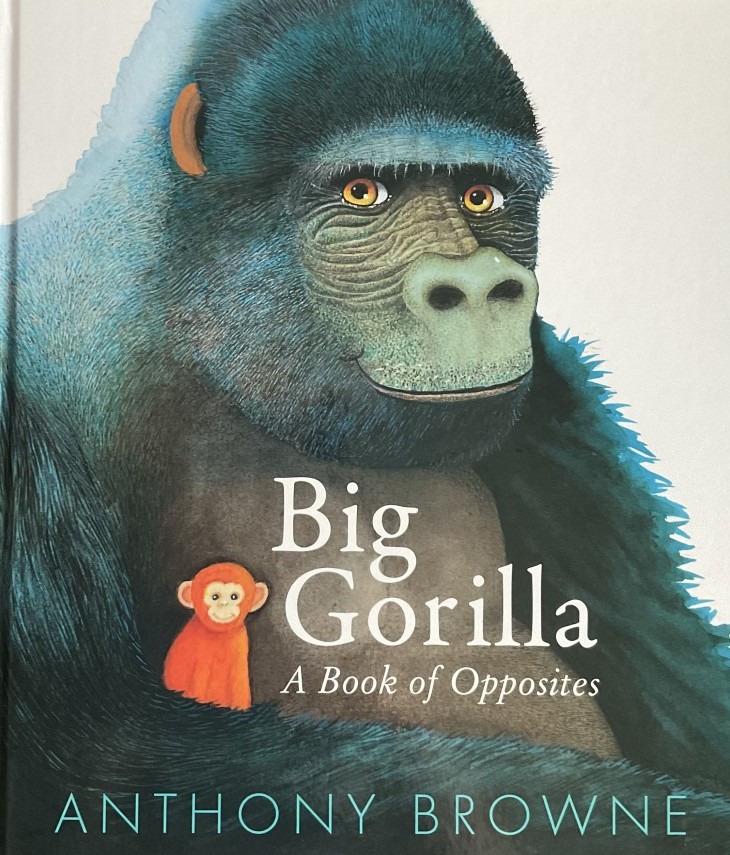Inspiring Young Readers
 posted on 06 Jun 2024
posted on 06 Jun 2024
Big Gorilla: A Book of Opposites by Anthony Browne
Several years ago we were lucky enough to see the award-winning Anthony Browne at Cheltenham Literary Festival when he was the current Children’s Laureate. He talked about how he is often asked the question ‘Why do you draw so many gorillas?’ The most famous example is probably ‘Gorilla’ published in 1983 which is still rated as one of the most complex, multi layered picture books. In his sumptuous autobiography ‘Playing the Shape Game’ co -written with his son, he provides four different answers to the question:
‘The wrinkles and lumps and bumps and swellings are irresistible to the pencil’.
‘Looking into a gorilla’s eyes is almost exactly like looking into a person’s eyes’.
‘They remind me of my father …a big, strong, quite fierce looking man ...while he encouraged us to be physical, there was another side of him that was extremely gentle.’
‘Gorillas represent a strange departure from humanity, which ties in well with the surreal, alternative version of reality that I present in my books.’
This is the latest in a long line of books featuring simian characters, this time aimed at younger readers as a way of introducing new vocabulary. The generously large format allows him to emphasise the hugeness of the animals with exquisitely drawn portrait pictures that fill alternate pages to complement the bold and minimal text.
The front cover shows a friendly looking gorilla staring out at us with the sharply defined hairs of his blue- black fur standing in contrast to the jolly looking smaller orange monkey nestled in his arm.
Every turn of the page is a delight as we meet apes who demonstrate the meaning of old, young, sad, happy, heavy, light, alone, together, big and small. My favourite is the one that shows a Capuchin yellow eyed monkey with his distinctive face framed with vivid white. The choice of a strong turquoise background makes the face powerful. If children look closely, they will see how the bold brush strokes of his deep red fur contrast with the more delicate fine lines of his face. I suggest that they might be inspired to create their own monkey portraits using similar painting techniques. They might also take time to create a back story for this interesting character.
The double page spread showing an impressive array of different apes will also encourage lots of careful looking, animated discussion and perhaps encourage some research into their various names and characteristics.
I strongly recommend this stunning picture book published by Walker Books which should be available from your local independent bookshop – who will be happy to order it for you if they don’t have it on their shelves.
Karen Argent
June 2024

